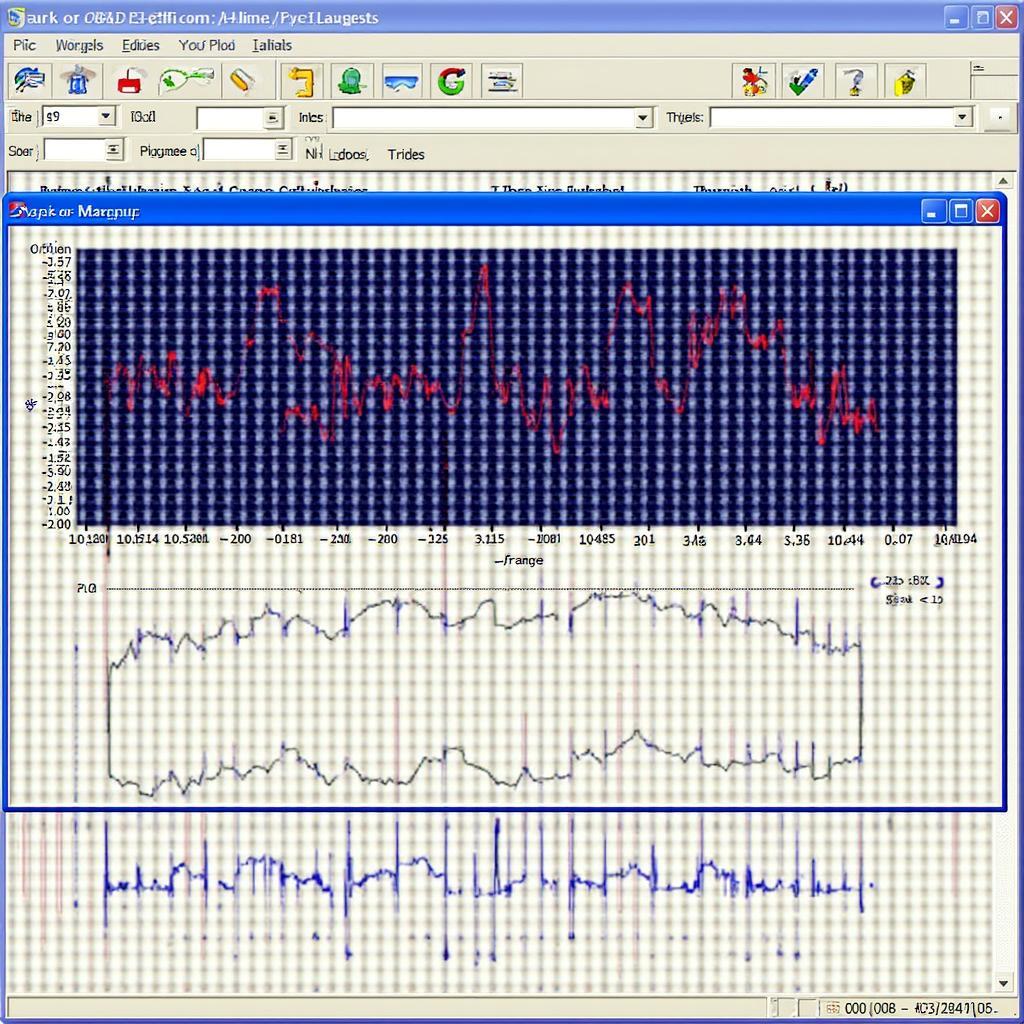OBD2 PID editor allows you to access and modify the Parameter IDs (PIDs) of your vehicle’s onboard computer. This powerful tool can unlock a wealth of information about your car’s performance, diagnostics, and even hidden features. Understanding how to use an OBD2 PID editor opens up a world of possibilities for car enthusiasts, mechanics, and anyone interested in delving deeper into their vehicle’s inner workings.
What is an OBD2 PID Editor and Why Should You Care?
An OBD2 PID editor is software, often combined with a hardware interface, that allows users to interact with their vehicle’s ECU (Electronic Control Unit) on a more granular level. It gives you the power to not just read standard OBD2 PIDs (like speed, RPM, and coolant temperature) but also to customize, add, or even modify existing ones. This ability to customize can be incredibly valuable for diagnosing complex issues, monitoring specific parameters, or even unlocking hidden functionalities. Imagine being able to track your turbo boost pressure with a custom PID or adjusting the sensitivity of a specific sensor. This is the power an OBD2 PID editor puts in your hands.
How to Choose the Right OBD2 PID Editor for Your Needs
Choosing the correct OBD2 PID editor depends heavily on your specific needs and technical expertise. Are you a professional mechanic needing advanced features, or a hobbyist looking to monitor a few key parameters? Some factors to consider include:
- Software Compatibility: Ensure the software is compatible with your operating system (Windows, Mac, Android, etc.) and your OBD2 interface.
- Vehicle Compatibility: Not all OBD2 PID editors work with every vehicle make and model. Research compatibility before purchasing.
- Features: Consider features like data logging, graphing, custom PID creation, and real-time data display.
- Ease of Use: A user-friendly interface is crucial, especially for beginners.
- Cost: Prices range from free open-source options to professional-grade software with a hefty price tag.
Unlocking Hidden Potential: Advanced Uses of OBD2 PID Editors
Beyond basic diagnostics, OBD2 PID editors offer a range of advanced functionalities for experienced users. These include:
- Custom PID Creation: Define and monitor specific parameters not included in the standard OBD2 set.
- Data Logging and Analysis: Record data over time to identify trends, diagnose intermittent issues, or analyze performance.
- ECU Tuning (Advanced Users): With the right knowledge and tools, some PID editors allow for ECU modifications.
- Hidden Feature Activation: Some vehicles have hidden features that can be activated through PID manipulation.
“A powerful tool in the right hands, OBD2 PID editors can transform how we interact with our vehicles,” says Michael Davis, Senior Automotive Engineer at CarDiagTech Workshop. “From in-depth diagnostics to performance tuning, the possibilities are truly remarkable.”
Navigating the Challenges: Potential Pitfalls of OBD2 PID Editing
While incredibly powerful, OBD2 PID editors carry potential risks if misused. Incorrect modifications can negatively impact vehicle performance, trigger error codes, or even damage the ECU.
- Always back up your original ECU settings before making any changes.
- Start with small adjustments and carefully monitor the results.
- Thoroughly research your vehicle’s specific PID information before attempting any modifications.
- If in doubt, consult a qualified professional.
 OBD2 PID Editor Data Logging Graph
OBD2 PID Editor Data Logging Graph
Conclusion: Harness the Power of OBD2 PID Editing
OBD2 PID editors offer unparalleled access to your vehicle’s data, empowering you to diagnose problems, monitor performance, and even unlock hidden potential. By choosing the right tool and exercising caution, you can harness the power of OBD2 PID editing and gain a deeper understanding of your vehicle. Remember to research thoroughly, proceed cautiously, and export data from obd2 data logger for analysis for a more comprehensive understanding.
FAQ
- What is a PID? A PID, or Parameter ID, is a code that identifies a specific piece of data that the vehicle’s ECU can provide.
- Is OBD2 PID editing safe? It can be safe if done correctly, but incorrect modifications can cause issues. Always back up your ECU data before making changes.
- Do I need special hardware to use an OBD2 PID editor? Yes, you’ll typically need an OBD2 interface that connects to your computer and vehicle.
- Where can I find information about my vehicle’s PIDs? Consult your vehicle’s service manual or online resources specific to your make and model.
- What are some common uses for OBD2 PID editors? Diagnostics, performance monitoring, data logging, and custom PID creation are some common uses.
- Can I use an OBD2 PID editor to improve fuel economy? While some modifications might indirectly influence fuel economy, it’s not the primary function of a PID editor.
- Are there free OBD2 PID editors available? Yes, some open-source options exist, but professional-grade software usually comes with a cost.
“Understanding the nuances of your vehicle’s data can be a game-changer. An OBD2 PID editor is the key to unlocking that knowledge,” says Susan Parker, Lead Diagnostic Technician at CarDiagTech Workshop.
For further insights, explore other resources on our website related to OBD2 diagnostics and data analysis.
Need help? Contact us via WhatsApp: +1(641)206-8880, Email: [email protected] or visit us at 789 Elm Street, San Francisco, CA 94102, USA. We have a 24/7 customer support team.
